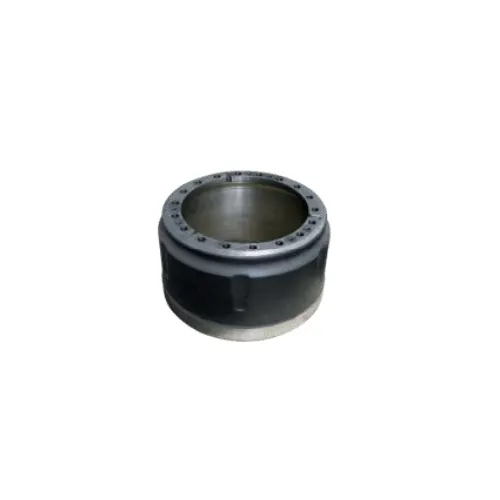The brake drum is a cylindrical component typically made of cast iron or aluminum alloy, attached to the wheel hub. When the driver presses the brake pedal, hydraulic pressure forces the brake shoes outward against the inner surface of the drum. The resulting friction slows down the rotation of the wheel, bringing the vehicle to a stop.
Brake drums come in different designs based on vehicle requirements:
Standard Solid Brake Drums – Commonly found in older and light-duty vehicles, these are single-piece cast iron drums known for their strength and heat resistance.
Vented Brake Drums – Designed with cooling fins between two drum walls, these improve heat dissipation, making them ideal for heavy-duty trucks and high-performance vehicles.
Composite Brake Drums – Made from a combination of materials (such as aluminum with a cast iron liner), these reduce weight while maintaining durability.
Drum-in-Hat Parking Brakes – Some modern disc brake systems incorporate a small drum brake inside the rotor hub for the parking brake function.
Cost-Effective – Cheaper to produce and maintain compared to disc brakes.
Durability – Robust construction makes them suitable for heavy loads and long-term use.
Self-Energizing Effect – The design of drum brakes can create additional stopping force as the shoes press outward, improving efficiency.
Effective for Parking Brakes – The enclosed design prevents contamination, making them reliable for parking brake systems.
Passenger Vehicles – Many economy cars and older models use rear drum brakes.
Commercial Trucks & Trailers – Heavy-duty drums handle large loads and frequent braking.
Industrial Machinery – Used in construction equipment, agricultural vehicles, and mining trucks.
Motorcycles & Scooters – Some models still utilize drum brakes for rear-wheel braking.
1. What is a brake drum and how does it work?
A brake drum is a rotating component of the drum brake system, typically mounted on the vehicle's wheel hub. When the brake pedal is pressed, brake shoes press against the inner surface of the drum, creating friction to slow down or stop the vehicle.
2. What materials are your brake drums made from?
Our brake drums are manufactured using high-quality cast iron or alloyed cast iron, known for excellent thermal conductivity, wear resistance, and durability under high temperatures and loads.
3. How do I know when a brake drum needs to be replaced?
Signs include vibration or pulsation during braking, scoring or cracking on the drum surface, reduced braking performance, or uneven wear. Brake drums should be inspected regularly and replaced if they exceed wear limits or show damage.
4. What is the standard lifespan of a brake drum?
The lifespan varies by vehicle type and usage, but under normal conditions, brake drums can last 100,000 to 150,000 kilometers (60,000–90,000 miles). Frequent heavy braking, overloading, or poor maintenance can shorten this lifespan.
5. Do you offer customized or OEM brake drum production?
Yes, we provide OEM & ODM services, including custom sizes, surface treatments, logo engraving, and packaging. We can manufacture according to customer drawings or samples, suitable for trucks, trailers, buses, and passenger vehicles.





